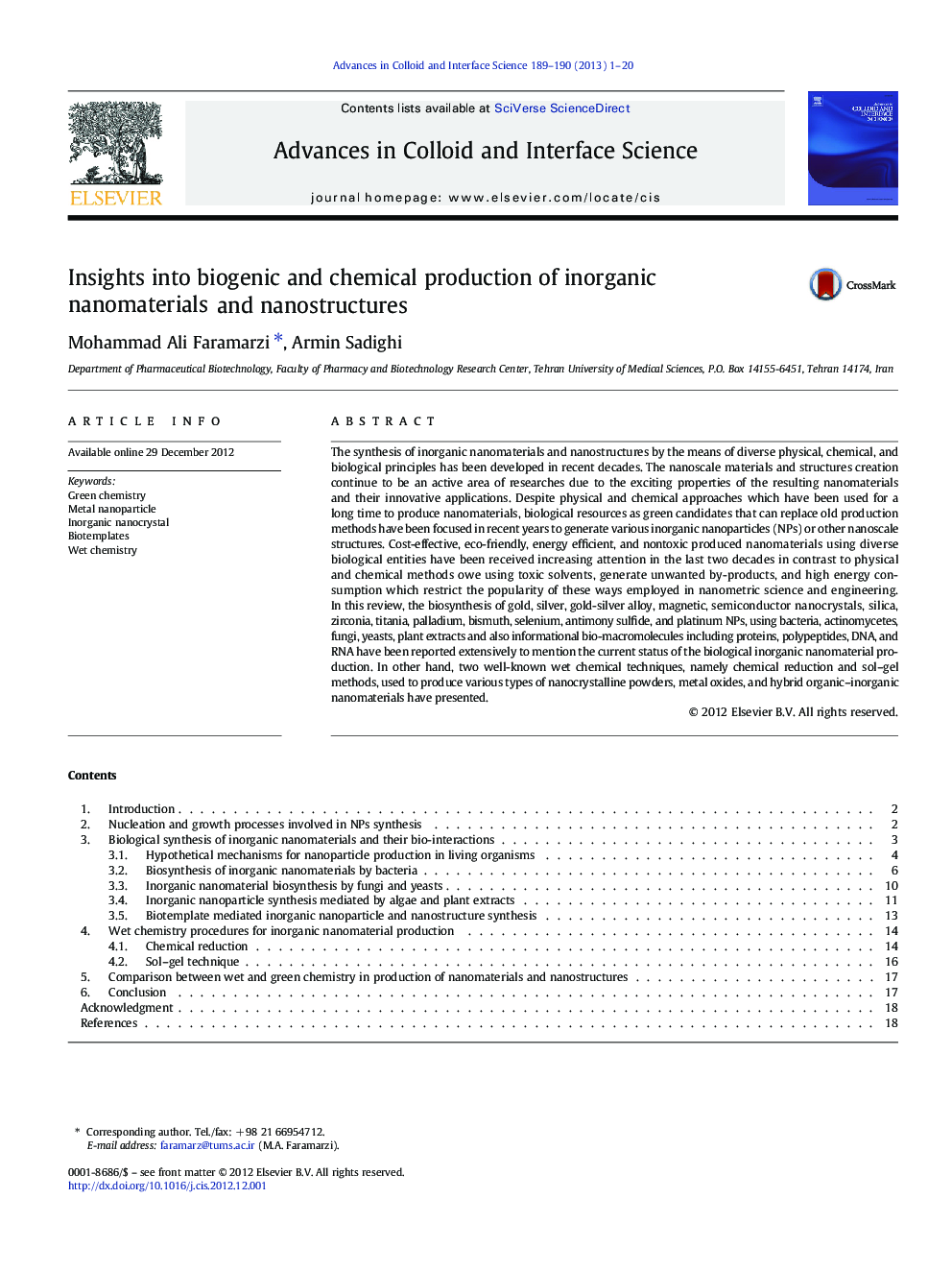| کد مقاله | کد نشریه | سال انتشار | مقاله انگلیسی | نسخه تمام متن |
|---|---|---|---|---|
| 590836 | 1453567 | 2013 | 20 صفحه PDF | دانلود رایگان |

The synthesis of inorganic nanomaterials and nanostructures by the means of diverse physical, chemical, and biological principles has been developed in recent decades. The nanoscale materials and structures creation continue to be an active area of researches due to the exciting properties of the resulting nanomaterials and their innovative applications. Despite physical and chemical approaches which have been used for a long time to produce nanomaterials, biological resources as green candidates that can replace old production methods have been focused in recent years to generate various inorganic nanoparticles (NPs) or other nanoscale structures. Cost-effective, eco-friendly, energy efficient, and nontoxic produced nanomaterials using diverse biological entities have been received increasing attention in the last two decades in contrast to physical and chemical methods owe using toxic solvents, generate unwanted by-products, and high energy consumption which restrict the popularity of these ways employed in nanometric science and engineering. In this review, the biosynthesis of gold, silver, gold-silver alloy, magnetic, semiconductor nanocrystals, silica, zirconia, titania, palladium, bismuth, selenium, antimony sulfide, and platinum NPs, using bacteria, actinomycetes, fungi, yeasts, plant extracts and also informational bio-macromolecules including proteins, polypeptides, DNA, and RNA have been reported extensively to mention the current status of the biological inorganic nanomaterial production. In other hand, two well-known wet chemical techniques, namely chemical reduction and sol–gel methods, used to produce various types of nanocrystalline powders, metal oxides, and hybrid organic–inorganic nanomaterials have presented.
Figure optionsDownload as PowerPoint slideHighlights
► The possibility, mechanisms, and applications of inorganic nanomaterials biosynthesis using bacteria, fungi, yeasts, algae, and plants were reviewed.
► The ability of the biological macromolecules, such as enzymes, structural proteins, lipids, saccharides, and nucleic acids were introduced.
► Wet and green chemical approaches for the synthesis of inorganic nanomaterials and nanostructures were presented and compared with each other.
Journal: Advances in Colloid and Interface Science - Volumes 189–190, March 2013, Pages 1–20